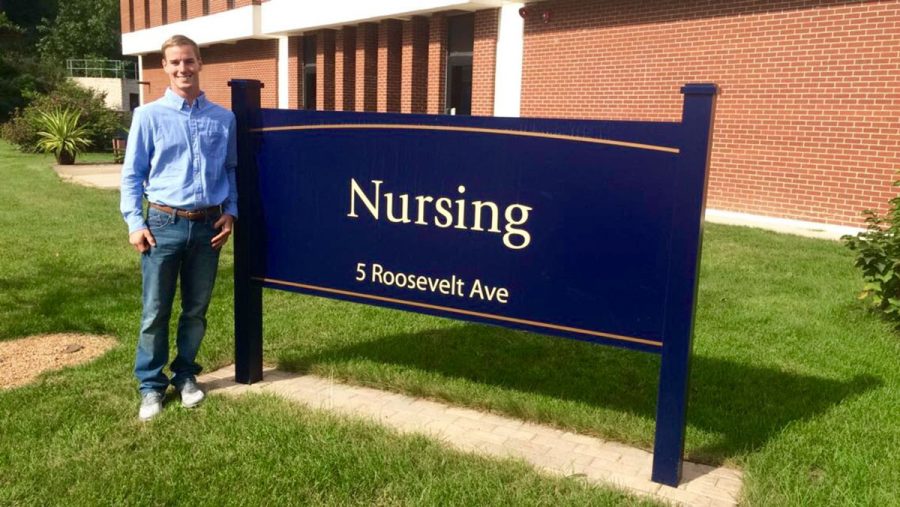Men’s Nursing Organization Emerges on Campus
UW-Eau Claire welcomes men’s nursing chapter with open arms
More stories from Nicole Bellford
Photo by Nicole Bellford
CALL THE NURSE: American Assembly of Men in Nursing Chapter President Jamison Young welcomes the new program to campus. The program offers support to male students interested in nursing.
UW-Eau Claire’s nursing community adopted a new organization targeting men who are interested in the program.
“The administration and faculty of the UW-Eau Claire Dean of the College of Nursing and Health Sciences want to be sure that men who are interested in the nursing programs will find a supportive environment,” Assistant Nursing Professor Mohammad Alasagheirin said.
The organization is a chapter of the nationally recognized program American Assembly of Men in Nursing (AAMN). The Eau Claire chapter is overseen by Alasagheirin, President Jamison Young, a senior nursing major and Secretary Tom Gugel, a junior nursing major.
According to AAMN statistics while nursing is a common choice in career path among prospective college students and graduates, just under 10 percent of these collegiate hopefuls are male. However, the organization is looking to change this predominantly female profession on campus this year.
Young and Gugel said the current enrollment status for male nurses on campus is around 12-15 percent, slightly higher than the national average. Through the development of this program, Young and Gugel intend to utilize visual presentation across campus to encourage a career path in nursing for Eau Claire’s male students and raise awareness about the minority within the profession.
“Our main goal for the program is really to help raise awareness about the lack of men involved in nursing and to try and encourage male enrollment numbers up to 20 percent,” Young said.
When questioned about the male nursing stereotype and how it impacted his involvement in the program, Young said he had a point to make.
“It’s frustrating to hear people call male nurses ‘murses,’ as if it’s weird or something. Nobody has a special name for female nurses or doctors, and male nurses shouldn’t be any different,” Young said. “I hope that this program can help raise awareness and eliminate stigmas like that.”
Alasagheirin and Young said the organization will highlight the rising demand for nurses aiming toward current nursing students as well as practicing nurses in the northwestern Wisconsin area.
Young believes the organization would benefit from raising awareness and stimulating encouragement at the high school level.
“I believe that if we speak about and promote men’s nursing at surrounding high schools, we can encourage high school students to consider nursing before they actually enter college,” Young said. “Talking about the benefits of it (nursing) to high school kids, such as a high job demand and good salary, might make some guys want to be nurses instead of doctors.”
With an upcoming AAMN conference this fall sponsored by the University of Miami School of Nursing and Health Sciences, Young and Gugel said they are hopeful that their current budget will allow them to be in attendance. The AAMN states that this conference will primarily focus on “promoting diversity and inclusivity in nursing.”
Currently, the AAMN has nearly 70 chapters stationed across the nation. While the organization does primarily focus on the encouragement and study of men’s nursing as a minority, the program opens its doors to female members as well.


